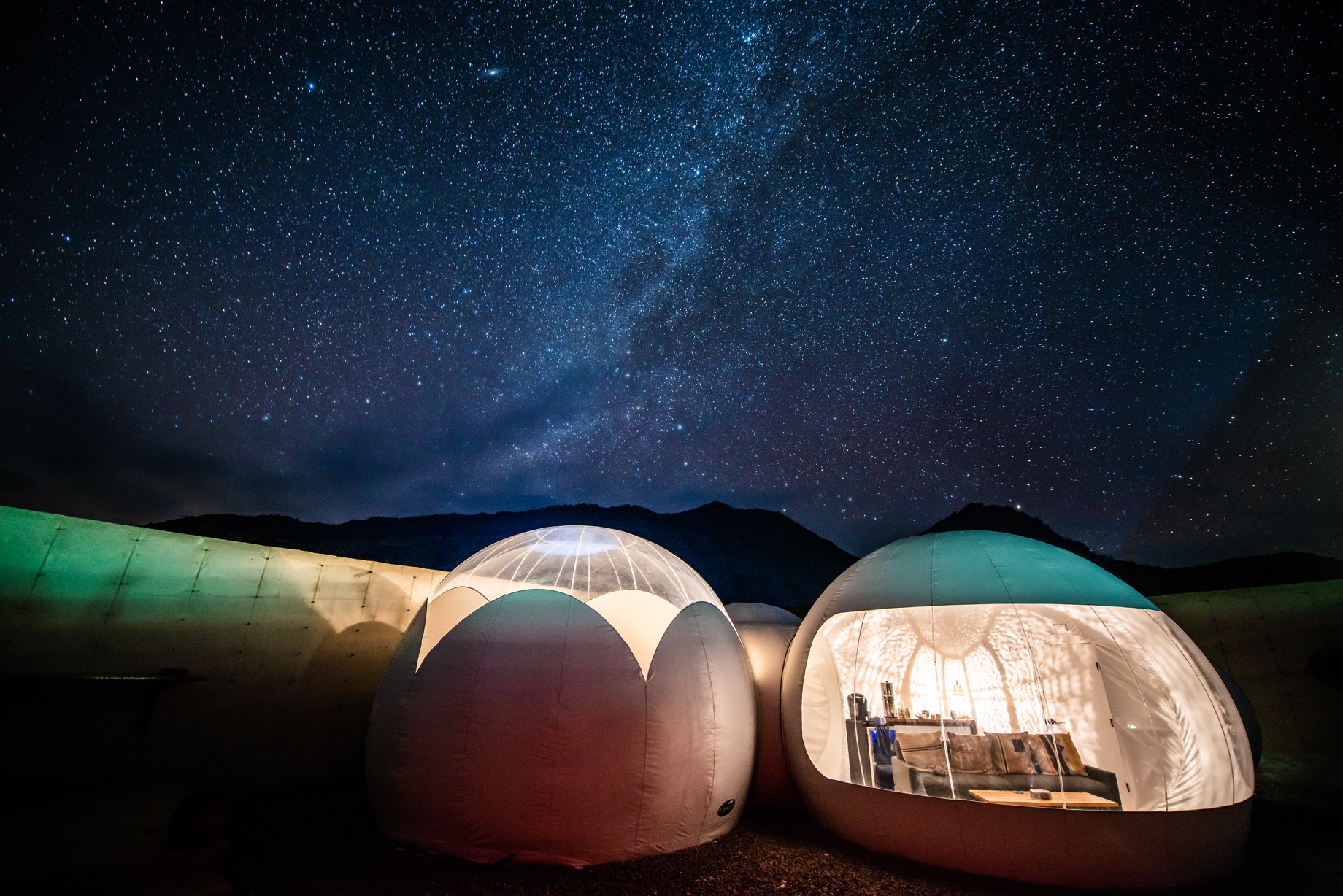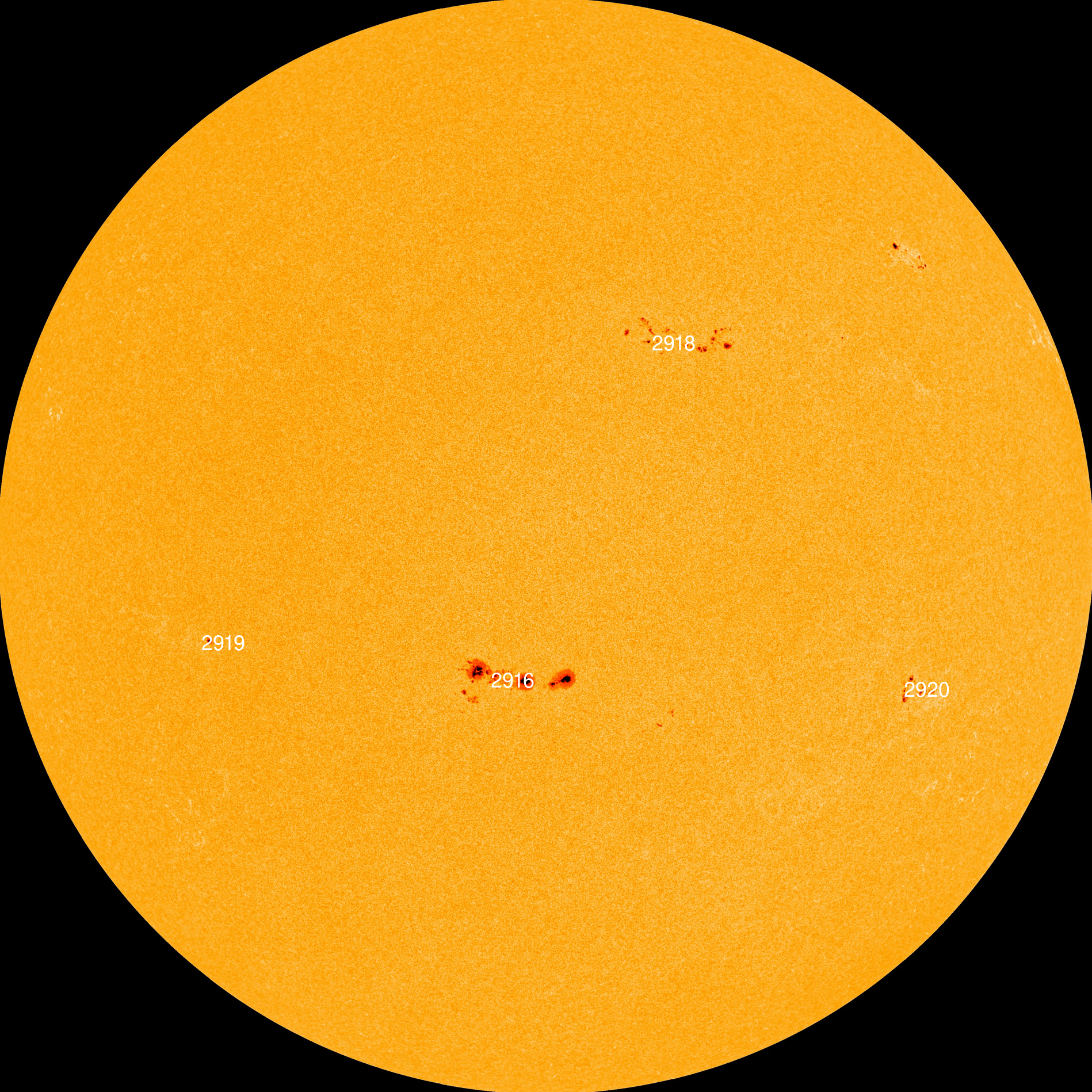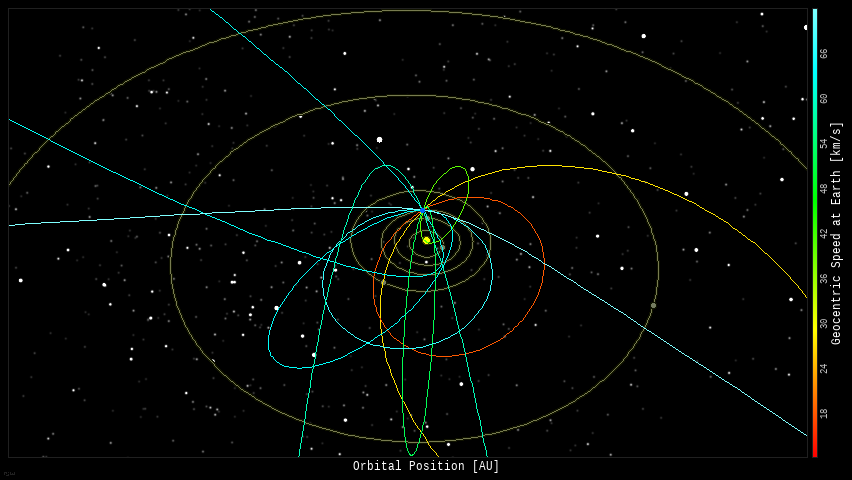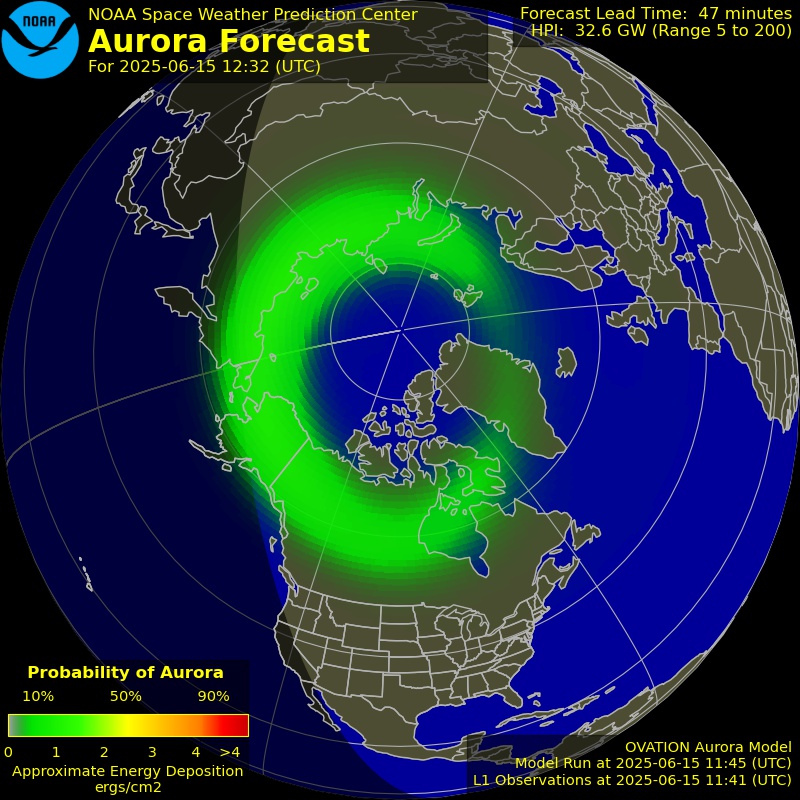Happy New Year!
We took our 22-month old granddaughter to see the ZooLights exhibit at the Detroit Zoo – it was pretty spectacular! She particularly liked chasing the lasers projected onto the walkway.
Our granddaughter has been over to visit several times in recent weeks – not once has the sky been clear enough for me to take her out to look at the stars. Just breathe, Bob…
My wife and I just made reservations to sleep under dark skies in a Bubble Hotel at Big Bend Park in Texas next April!

Speaking of my granddaughter, she showed up unexpectedly yesterday and had to stay the day and night with us – her papa slipped on some black ice and broke his sacrum and something else in his pelvis. =Ouch!= My daughter had to wait nearly half the day just trying to get him into a hospital for an MRI.
Here at home, my granddaughter made working on this post particularly difficult… AND she’s learned a new trick: the side-walls of the porta-crib we’ve been having her sleep in are now merely suggestions – I watched her effortlessly climb up and out in seconds! We just purchased a toddler crib…

Mercury makes a return to the sky at dusk! Jupiter, Saturn, Venus and Mercury appear in the southwestern sky after sunset all week. Mercury gets higher each day, as Venus gets lower; Venus will vanish into the Sun’s glare by early January. Saturn sets a little after 7:00 PM, and Jupiter sets around 9:00 PM.

Mars appears low above the southeastern horizon near the star Antares before sunrise all week; the Moon appears between Mars and the star Spica on Dec. 29th, and then appears very near Mars and Antares on Dec. 31st.
-

Mars appears low above the southeastern horizon near the star Antares before sunrise all week; the Moon appears between Mars and the star Spica on Dec. 29th. Credit: Bob Trembley / Stellarium. -

Mars appears low above the southeastern horizon near the star Antares before sunrise all week; the Moon appears very near Mars and Antares on Dec. 31st. Credit: Bob Trembley / Stellarium.
The constellations Pisces, Pegasus and Andromeda appear high in the western sky after sunset all week. You should be able to spot M31, the Andromeda galaxy from moderately dark sky sites. (In the image below, the galaxy is the smudge just to the right of the word Andromeda.)


- The Moon is a Waning Crescent – visible low to the east before sunrise.
- The New Moon occurs on Jan 2nd – the part of the Moon facing us is completely in shadow.
- After Jan. 2nd, the Moon will be a Waxing Crescent – visible toward the southwest in early evening.

If you click on the Moon image above, or click this link, you will go to NASA’s Moon Phase and Libration, 2021 page – it will show you what the Moon looks like right now. If you click the image on that page, you will download a high-rez TIFF image annotated with the names of prominent features – helpful for logging your lunar observations!
Moon News

WOW again! The Sun is still covered in spots! 4 named spots today – down from 8 last week. But this week we get a MONSTER spot right in the center, and a lot of discolored plage regions – Spaceweather.com says AR2916 is big and quiet. The sunspot has a relatively simple ‘beta-class’ magnetic field that poses little threat for strong flares.

Videos courtesy of NASA/SDO and the AIA, EVE, and HMI science teams.
You can view the Sun in near real-time, in multiple frequencies here: SDO-The Sun Now.
You can create your own time-lapse movies of the Sun here: AIA/HMI Browse Data.
You can browse all the SDO images of the Sun from 2010 to the present here: Browse SDO archive.
Amateur Solar Astrophotography
Solar Corona
Solar wind speed is 527.3 km/sec ▼ with a density of 12.1 protons/cm3 ▲▲ at 1546 UT.
Click here to see a near real-time animation of the corona and solar wind from the Solar & Heliospheric Observatory (SOHO).
Sun News:

- Near-Earth Objects (NEOs) discovered this month: 138, this year: 3068 (+1), all time: 27,902 (+1)
- Potentially Hazardous Asteroids (PHAs): 2239 (+1 updated 2021-12-28)
- Total Minor Planets discovered (MPC): 1,143,154 (-55, updated 2021-12-28) – negative corrections for several weeks now.
- Total Minor Planets discovered (NASA): 1,113,527 (updated 2021-08-17) – not updated for months.
Upcoming Earth-asteroid encounters:
| Asteroid | Date(UT) | Miss Distance | Velocity (km/s) | Diameter (m) |
| 2017 AE3 | 2021-Dec-29 | 9.3 LD | 19.1 | 155 |
| 2014 YE15 | 2022-Jan-06 | 19.3 LD | 6.4 | 8 |
| 2020 AP1 | 2022-Jan-07 | 4.6 LD | 5.7 | 4 |
| 2013 YD48 | 2022-Jan-11 | 14.6 LD | 14.8 | 107 |
| 2021 BA | 2022-Jan-18 | 9.8 LD | 9.1 | 22 |
| 7482 | 2022-Jan-18 | 5.2 LD | 19.6 | 1732 |
| 2018 PN22 | 2022-Jan-21 | 11.4 LD | 2.7 | 11 |
| 2017 XC62 | 2022-Jan-24 | 18.7 LD | 4.3 | 112 |
| 2021 BZ | 2022-Jan-27 | 17.6 LD | 14.6 | 39 |
| 2018 CA1 | 2022-Feb-05 | 9.8 LD | 15.1 | 32 |
| 2007 UY1 | 2022-Feb-08 | 13.9 LD | 6.6 | 89 |
| 2020 DF | 2022-Feb-14 | 12 LD | 8.6 | 20 |
| 2018 CW2 | 2022-Feb-18 | 2.2 LD | 10.8 | 25 |
| 2020 CX1 | 2022-Feb-18 | 7.2 LD | 8.2 | 54 |
| 455176 | 2022-Feb-22 | 14 LD | 25.1 | 257 |
| 2017 CX1 | 2022-Feb-23 | 15.2 LD | 5 | 8 |
| 2016 QJ44 | 2022-Feb-24 | 19.6 LD | 8.5 | 324 |
Asteroid News:

On December 27, 2021, the NASA All Sky Fireball Network reported 9 fireballs!
(8 sporadics, 1 Dec. Leonis Minorid)

Fireball News:
If you see a bright meteor or a fireball, please REPORT IT to the American Meteor Society and the International Meteor Organization!

Position of the planets & several spacecraft in the inner solar system on December 28th:

Position of the planets in the middle solar system:

Position of the planets in the outer solar system:

Solar System News

See a list of current NASA missions here: https://www.jpl.nasa.gov/missions?mission_status=current

ex·o·plan·et /ˈeksōˌplanət/, noun: a planet orbiting a star other than the Sun.
Data from the NASA Exoplanet Archive
* Confirmed Planets Discovered by TESS refers to the number planets that have been published in the refereed astronomical literature.
* TESS Project Candidates refers to the total number of transit-like events that appear to be astrophysical in origin, including false positives as identified by the TESS Project.
* TESS Project Candidates Yet To Be Confirmed refers to the number of TESS Project Candidates that have not yet been dispositioned as a Confirmed Planet or False Positive.
Exoplanet News:
I just LOVE what NASA has been doing with posters in recent years!

SpaceWeather.com Realtime Aurora Gallery: https://spaceweathergallery.com/aurora_gallery.html
Latest Aurora Oval Forecast

- Visit an International Dark Sky Park: https://www.darksky.org/our-work/conservation/idsp/parks/
- If you live in Michigan, visit the Michigan Dark Skies site: https://sites.lsa.umich.edu/darkskies/

STEM
Beautiful Universe: M31 – The Andromeda Galaxy
It never ceases to amaze me how just how LARGE our neighboring galaxy is: 1 trillion stars compared to our Milky Way’s 400 billion.

The Andromeda Galaxy also known as Messier 31, M31, or NGC 224 and originally the Andromeda Nebula, is a barred spiral galaxy approximately 2.5 million light-years from Earth and the nearest large galaxy to the Milky Way. The galaxy’s name stems from the area of Earth’s sky in which it appears, the constellation of Andromeda, which itself is named after the Ethiopian (or Phoenician) princess who was the wife of Perseus in Greek mythology.
The virial mass of the Andromeda Galaxy is of the same order of magnitude as that of the Milky Way, at 1 trillion solar masses. The mass of either galaxy is difficult to estimate with any accuracy, but it was long thought that the Andromeda Galaxy is more massive than the Milky Way by a margin of some 25% to 50%. This has been called into question by a 2018 study that cited a lower estimate on the mass of the Andromeda Galaxy, combined with preliminary reports on a 2019 study estimating a higher mass of the Milky Way. The Andromeda Galaxy has a diameter of about 220,000 ly, making it the largest member of the Local Group in terms of extension.
The Milky Way and Andromeda galaxies are expected to collide in around 4-5 billion years, merging to form a giant elliptical galaxy or a large lenticular galaxy. With an apparent magnitude of 3.4, the Andromeda Galaxy is among the brightest of the Messier objects, making it visible to the naked eye from Earth on moonless nights, even when viewed from areas with moderate light pollution. – Wikipedia
Software Apps used for this post:
NASA Eyes on the Solar System: an immersive 3D solar system and space mission simulator – free for the PC /MAC.
Stellarium: a free web-based planetarium app. It’s a great tool for planning observing sessions.







